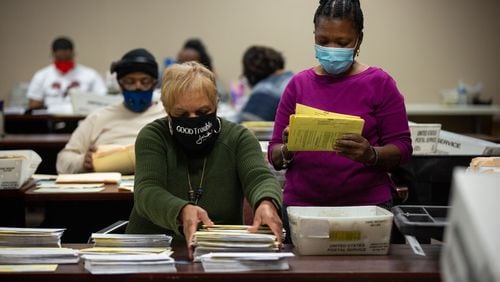The College Board's decision to omit race as one of the factors in the adversity scores it plans to assign students who take the SAT continues to spur debate.
In its Environmental Context Dashboard, the College Board will compile a numerical index that ranks how much adversity and inequality applicants experienced from the environmental factors of where they grew up and attended school.
Students will not see their overall disadvantage level on the College Board's Environmental Context Dashboard; nor will their individual circumstances influence it. Instead, the adversity score will mine community data such as median family income, percentage of poor households, percentage of single-parent families, crime statistics, jobless rates and percentages of vacant housing units and high school dropouts. The score will not so much identify diamonds in the rough, as diamonds living in the rough.
But race and ethnicity will not be part of the calculation of hardships, likely because the College Board recognized the courts are ill-disposed to race-conscious admissions policies and sought to provide what amounts to a work-around for campuses looking to increase diversity.
I asked Southern Methodist University law professor Lolita Buckner Inniss about the omission of race after she briefly referenced it in a column last week. (Inniss wrote about the lifelong burden of college costs in response to billionaire Robert Smith's pledge to pay off the debt of Morehouse's 2019 graduates.)
In her essay, Inniss mentioned she was skeptical of the College Board’s approach because it would not consider race or generational hardship. I asked her to detail her reservations for a print AJC story I was writing but also felt her thoughtful response was worth sharing here on the blog
Inniss said:
I think part of the problem that we face today is that institutions are terrified to talk about race and the relative advantages and disadvantages that stem from it. There's plenty of social science and anecdotal evidence that shows that black people (I focus on black people because of their particularly disadvantaged position) have never had access to the same sorts of resources as white people. Regardless of education and income, whites still retain a net advantage.
Moreover, anti-black racism is a never-ending harm. Some people seem to think that as long as there's no burning cross involved, or other explicitly racist act, everything is fine. This kind of thinking ignores more subtle (but not always) discrimination against blacks in hiring, in obtaining rental housing and homes for sale, in mortgage lending processes, in interactions with supervisors, peers and subordinates, and in a host of other daily activities. These harms are cumulative, and they result in a persistent racial wealth gap between whites and blacks.
I understand that the College Board is in the measurement business, and so certainly they would not wish to tally up everyone's particular, individualized experience with social or economic disadvantage. It is therefore understandable that they would wish to use broad indicators of advantage/disadvantage such as poverty or crime rates in particular neighborhoods. But all while they plan to do this, they don't seem to be afraid of painting with too broad a brush. However, mention race as a broad indicator of relative advantage and, despite overwhelming amounts of data that show correlations between race and advantage, panic ensues.
The way for the College Board and other institutions to try to provide some redress for racial discrimination is to address race head on and stop being afraid of being sued for doing so. If lawsuits result from directly addressing race, then so be it. The rights that people of color currently enjoy are the result of decades of litigation, some of it not always successful. How is it that we are now routinely willing to lie to ourselves about the role of race in our society just to avoid court challenges?
In defending the adversity score, Richard D. Kahlenberg, senior fellow at the Century Foundation and author of "The Remedy: Class, Race and Affirmative Action," wrote in the Atlantic:
Nevertheless, even an imperfect adversity score is better than failing to account for the difficulty so many students overcome. Research from Anthony Carnevale of Georgetown University has found that the most disadvantaged students, on average, score a whopping 784 points lower on the SAT (out of a possible 1600) than the most advantaged.
Many decades into the controversy over affirmative action in college admissions—and with a conservative Supreme Court poised, many believe, to overturn the practice—an adversity score offers colleges some way to acknowledge what everyone knows: A student who scored 1200 on the SAT despite having grown up in a high-crime neighborhood and attending high-poverty schools has more long-run potential than a student who earned 1200 while having access to the best private schools and paid tutors. In the end, even rough measures of socioeconomic disadvantage are better than no measure at all.
Your thoughts?







